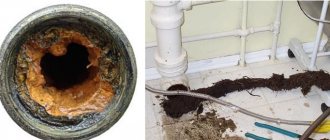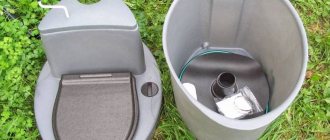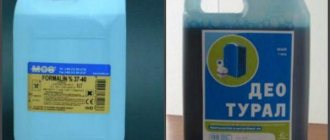Many people have experienced clogs in their sewer pipes. More often, a paid service is called to clean it. Wasting money can be avoided because there are methods for cleaning sewer drains yourself. For example, it is common to use caustic soda to clean sewers. This is a caustic substance with which you can independently remove any blockage.
Weighing Caustic Soda
Description and composition of the substance
In industrial, construction, and chemical stores you can buy 3 types of soda:
- caustic;
- food;
- calcified.
The first has a strong cleansing effect. These are large white crystals, the average size of which is 1.5 cm.
The structural formula of caustic soda is NaOH. The composition contains molecules of sodium, hydrogen, oxygen. It is impossible to find a pure substance in nature. It is obtained industrially. Consumable raw materials - table salt. The finished substance must contain at least 98.5% sodium hydroxide.
In stores, caustic soda can be found in liquid and solid form. It must be transported carefully so that the substance does not deteriorate and harm others. Caustic soda dissolves in water, releasing a large amount of heat.
Caustic sodium powder (Photo: Instagram / wapnopostach)
Precautionary measures
Due to the fact that caustic alkali destroys organic compounds, it is dangerous for the skin and mucous membranes. Due to careless handling of the substance, irritation, ulcers, and eczema may appear on the skin. No less dangerous is getting the concentrated product or ready-made solution into your mouth or eyes. Since the chemical actively absorbs moisture and generates heat, a thermal burn appears at the site of injury very quickly.
The safe use of caustic soda for sewer cleaning implies compliance with the following rules:
- Store the drug in a tightly closed container, in a cool, dry place away from heating devices and out of reach of children. The shelf life of caustic alkali is 12 months from the date of manufacture. After this period, the product loses its qualities.
- Before starting to work with caustic, put on a robe and headscarf. Hands are protected with rubber or nitrile gloves. The eye and nose area is protected with special goggles and a mask.
- During preparation and application of the solution, it does not hurt to open a vent or window for fresh air.
- After the cleaning procedure, thoroughly wipe the surface and wash your hands.
- If splashes get on the skin, wipe it with food vinegar.
- If the product gets on the mucous membranes, rinse the affected area generously under running water, apply a 2% solution of boric acid and be sure to get examined by a doctor.
Operating principle
Caustic sodium has an aggressive effect on various types of contaminants. It dissolves dirt and softens the plaque layer. After the substance has worked for several hours, you need to pour a large amount of water into the pipeline to wash away the contaminants.
Caustic soda can be used to dissolve organic waste in plastic pipes. Polymers are inert materials that do not react with chemicals. Dirt slowly accumulates on the smooth plastic walls.
Sewer plastic pipes (Photo: Instagram / armada_tmb)
Where to buy caustic and how much is needed?
Caustic sodium is not something rare, so it can be found freely in hardware stores, household chemicals departments in supermarkets. The product is inexpensive, but has a lot of benefits.
Recommended for you:
How and why to treat the soil with soda in the garden
If you need to clean the pipes and septic tank of a private or country house, then prepare 3-5 kg of soda. To carry out work in the apartment you will need 2 kg of this product. It costs to flush the pipes of a private house twice, but once will be enough for an apartment.
Benefits of caustic soda:
- active components are able to cope with any contaminants;
- eliminates roughness and unevenness on the inner walls of pipes on which dirt deposits form;
- can be used as needed, and also as a means of preventing pollution;
- ease of use;
- availability of sale.
The disadvantages of using caustic are the following:
- unsafe and toxic;
- more effective only in combination with other chemicals;
- does not remove earthen dirt;
- It cleans sinks and bathtubs well, but gradually corrodes the enamel.
Expert opinion
Did you know that...
A septic tank is a necessary element of a country house. But he requires regular care. Caustic soda is a good option to do everything quickly, simply, without involving specialists in the work.
Advantages and disadvantages
Positive traits:
- rapid removal of organic deposits;
- ease of use;
- saving on calling a sewer drain cleaning service;
- availability;
- Possibility of use for cleaning pipelines made of plastic, rubber, cast iron, steel;
- heat generation, which helps to quickly clean the sewer drain.
Negative qualities:
- Caustic soda is only suitable for decomposing organic deposits.
- High toxicity of the chemical. In order not to harm your health, you need to follow safety rules.
- Caustic soda can only be stored in a closed container. In the open air it evaporates quickly.
- Alkali loses its active properties 12 months after production.
Caustic is not recommended to be applied to enameled, galvanized or aluminum or brass surfaces. It will ruin the appearance of items.
Brass sink (Photo: Instagram / bronzoff)
Benefits of using caustic soda
Despite its high chemical activity, caustic soda is included in almost all products recommended for cleaning drains. For household needs, it is available in the form of gels, powder or granules. The method of cleaning sewers using sodium hydroxide is convenient because:
- the reagent copes well with various types of contaminants in the sewer;
- alkali has a corrosive effect on fatty deposits and other organic compounds accumulating in sewage drains;
- neutralization with alkali is necessary after cleaning the sewer with acid, which has a corrosive effect on the pipes;
- caustic soda also destroys solid contaminants in the sewer, softening and decomposing them, after which they are easily washed out of the pipeline;
- The advantages of the application also include the availability of the product and ease of use.
Some disadvantages of this method are associated with the chemical activity of caustic soda:
- when cleaning bathtubs or sinks, an aggressive alkaline environment destroys the enamel over time;
- When working, protective equipment is required.
How to clean a drain?
To clean sewers with caustic soda, you can use different compositions:
- liquid solution;
- dry powder;
- special gel.
Depending on the selected composition, the cleaning method and stages of the procedure change.
Solution
A caustic soda solution is used when the blockage has formed deep in the pipeline, far from the drain. Principles for making the product:
- Pour water into the prepared container.
- Pour powder into liquid.
- Stir the solution until the particles are completely dissolved.
When mixing the solution, the powder must be added in small portions, since it reacts violently with water.
Carrying out cleaning:
- Pour 3 kg of dry matter into 7 liters of hot water.
- Mix thoroughly until the caustic is completely dissolved.
- Pour the prepared solution down the drain. This should be done slowly, in a uniform stream.
- Wait 3 hours. Pour 20 liters of water down the drain to wash away the caustic film with waste.
Caustic soda solution (Photo: Instagram / cristal__him)
Dry powder
The powder is used to clean contaminants at different levels of sewer drains. Carrying out the procedure:
- Turn on the hot water tap for 20 minutes. Before cleaning, the pipes must be warmed up.
- Pour 100–150 grams of caustic soda powder into the drain hole.
- Open the cold water tap and leave for 30 seconds.
- Do not use the drain for 3–5 hours. The taps must not be opened at this time.
- Open cold water for 15–20 minutes. Water will gradually wash away plaque, organic residues, and caustic powder.
It is not recommended to use concentrated powder for old metal and plastic pipelines. It can damage surfaces and lead to leaks.
Caustic soda powder (Photo: Instagram / chemstore.spb.ru_)
Gel
Cleaning drains with caustic soda is a method that is not suitable for everyone. In order not to harm your body, and not to mix the finished composition yourself, you can buy a specialized gel based on caustic soda. Instructions for use:
- Pour a small amount of gel into the drain hole (it is indicated on the label).
- Avoid using the drain for the period indicated on the gel packaging.
- After about 2 hours, wash off any remaining gel and organic waste with a strong stream of cold water.
The liquid flow should flow intensively into the drain for 15 minutes.
Scope of application of sodium hydroxide
Basically, this is the elimination of severe contamination, since the product effectively dissolves dirt, fat accumulation, soot, carbon deposits, and oil stains. Alkaline properties are used to neutralize acidic wastewater. Thanks to these properties, the product is effectively used for cleaning sewage drains; it perfectly dissolves organic components contained in contaminants; soda copes with all this without difficulty.
You can do this cleaning yourself without much difficulty; you don’t need any special skills for this. You just need to pour the product into the pipes and wait a certain time, then rinse with running water for several minutes, repeat the procedure if necessary.
Cleaning the cesspool
Caustic soda is suitable not only for cleaning pipelines and sewer drains. With its help, you can destroy organic waste that has accumulated in the cesspool. Cleaning process:
- Visually inspect the pit. Insects should not spread caustic soda particles over the adjacent area.
- Check the cesspool ventilation system.
- Prepare the solution. You will need 4 kg of the finished composition per 1 cubic meter of organic waste in the pit.
- Fill the hole with the prepared solution. Wait 10 minutes.
If there is too much waste, you can repeat the procedure several times.
Cleaning cesspools with caustic soda is not the best way to eliminate sewage, since soda can poison the soil.
Cesspool (Photo: Instagram / dream_apartments_blyad)
When should you clean your septic tank?
A cesspool, if it is created using the right technology and is systematically maintained, can last quite a long time. There are signs that indicate it's time to clean the container.
The main ones are:
- the appearance of a persistent unpleasant odor;
- formation of silt at the bottom of the pit;
- rapid overflow of the container;
- Strong factions settle on the walls, which are almost impossible to get rid of.
If one or more of these signs are present, then immediate cleaning should be done. Many owners claim that if the septic tank is very dirty, caustic soda will not help, but one of the modern biological agents will. Nowadays there are quite a lot of them on sale, you can choose exactly the one that is completely suitable.
Recommended for you:
How to use soda in the fight against caterpillars: in the garden, vegetable garden, at the dacha
Carrying out cleaning
Before cleaning the sewer pipe with soda and vinegar, make sure that you have everything you need at hand:
As you can see, the price of the listed components is not high, and most likely you can find everything you need at home.
- Pour half a pack of baking soda into the drain without mixing it with water.
- Pour half a glass of vinegar there.
Cleaning pipes with soda and vinegar causes a violent reaction
- Leave the mixture for half an hour to dissolve the debris. Meanwhile, set the water to boil.
- After thirty minutes, remove the rag and gradually, slowly, pour boiling water into the drain.
- If the problem is not solved, then we repeat the entire process until it is completely eliminated.
Prevention
What could be better than successfully removing the clog? Only its prevention.
For preventive purposes, you can use soda and salt:
- Pour half a cup of both ingredients into the drain.
- Pour several liters of boiling water.
- We leave the sewer for eight hours without operation.
Such measures, if they do not completely eliminate the possibility of an emergency, will certainly significantly delay such an unpleasant moment.
Modern sewerage and its blockage
In accordance with the modern classification, the so-called household-fecal or domestic sewage system is installed in residential buildings, which, in turn, is divided into the following types:
- centralized, installed in apartment buildings;
- autonomous, used in individual buildings, including private residential buildings.
We can say with complete confidence that where there is a sewer, sooner or later it will always become clogged.
Localization of the blockage
First you need to determine the location of the blockage. If water suddenly stops draining normally from all the sinks, bathtubs and toilets in the house, then the problem is very serious. The central riser, that is, the main pipe through which water drains from all the apartments located in the entrance, has become clogged. In this case, there is no need to act on your own; you must immediately report the problem to your housing office. This should be done by professionals with the appropriate equipment.
Reason for blockage
Each apartment owner decides for himself what to do if the sink in the kitchen or bathroom is clogged. a local problem yourself. Sewer system clogs can be divided into several types:
- Fat deposits and food debris. Characteristic primarily for kitchen sinks.
- Hair, animal fur and soap residue. They most often occur in sinks located in bathrooms, as well as in the bathtubs themselves.
- Silt deposits. They occur more often in rural areas in the case of poor-quality water obtained from a shallow well.
- Large pieces of fabric or thick paper. Characteristic primarily for clogging of the toilet or central riser.
- Deposition of calcium and rust on the walls of sewer pipes. This applies primarily to old cast iron pipes, still made in the Soviet Union.
How to clean a drain
There are several ways to clean a sewer system. Some of them can be used as preventative measures to prevent clogs from occurring . Sometimes several methods are used at once in case of an extremely neglected condition of the sewer system. Some methods, on the contrary, cannot be combined with each other, as this can lead to the destruction of the entire system.
Thermal method
The simplest and most affordable option . To implement it, you need boiling water and an appropriate container in which the water is brought to a boil. Hot water is poured directly into the sink or bathtub drain. There are some important things to pay attention to:
- You need to pour boiling water, not just hot water.
- The volume of boiling water is at least three liters, and preferably more.
- This is a very good method of preventing blockages.
The method is especially effective for kitchen sinks, since a characteristic feature of kitchen clogs is abundant fatty deposits, which dissolve very well in boiling water and are then washed out with a stream of hot water .











